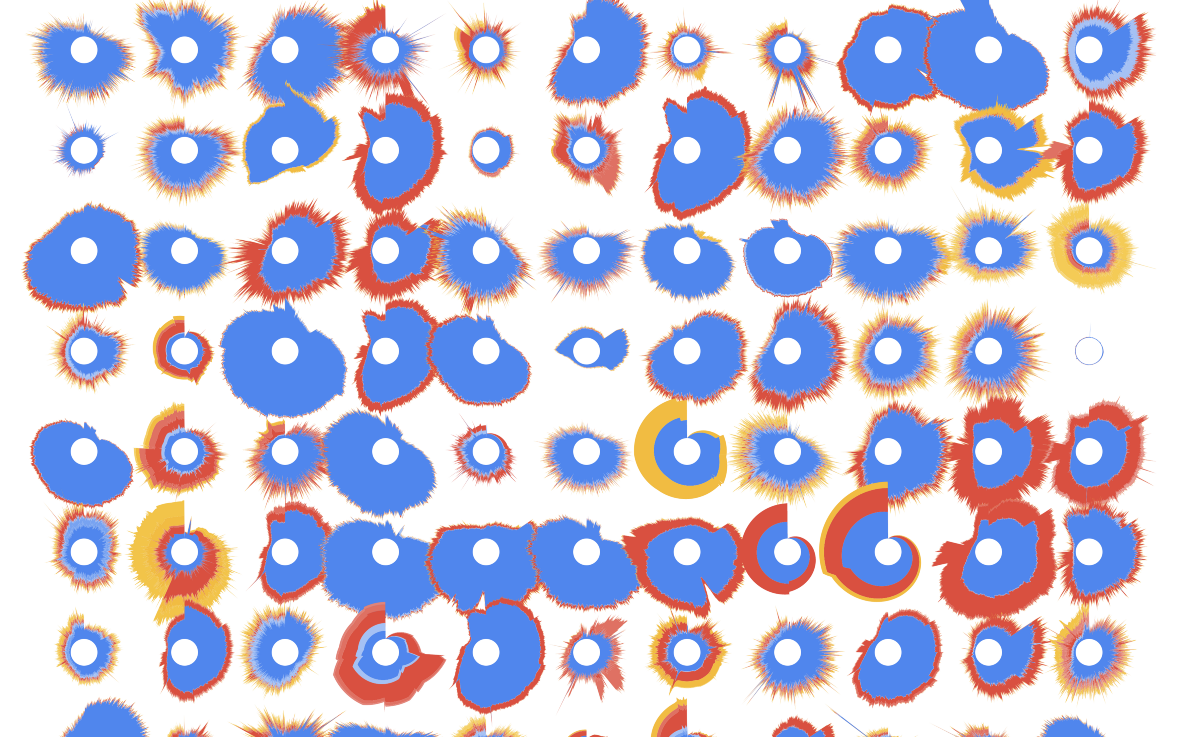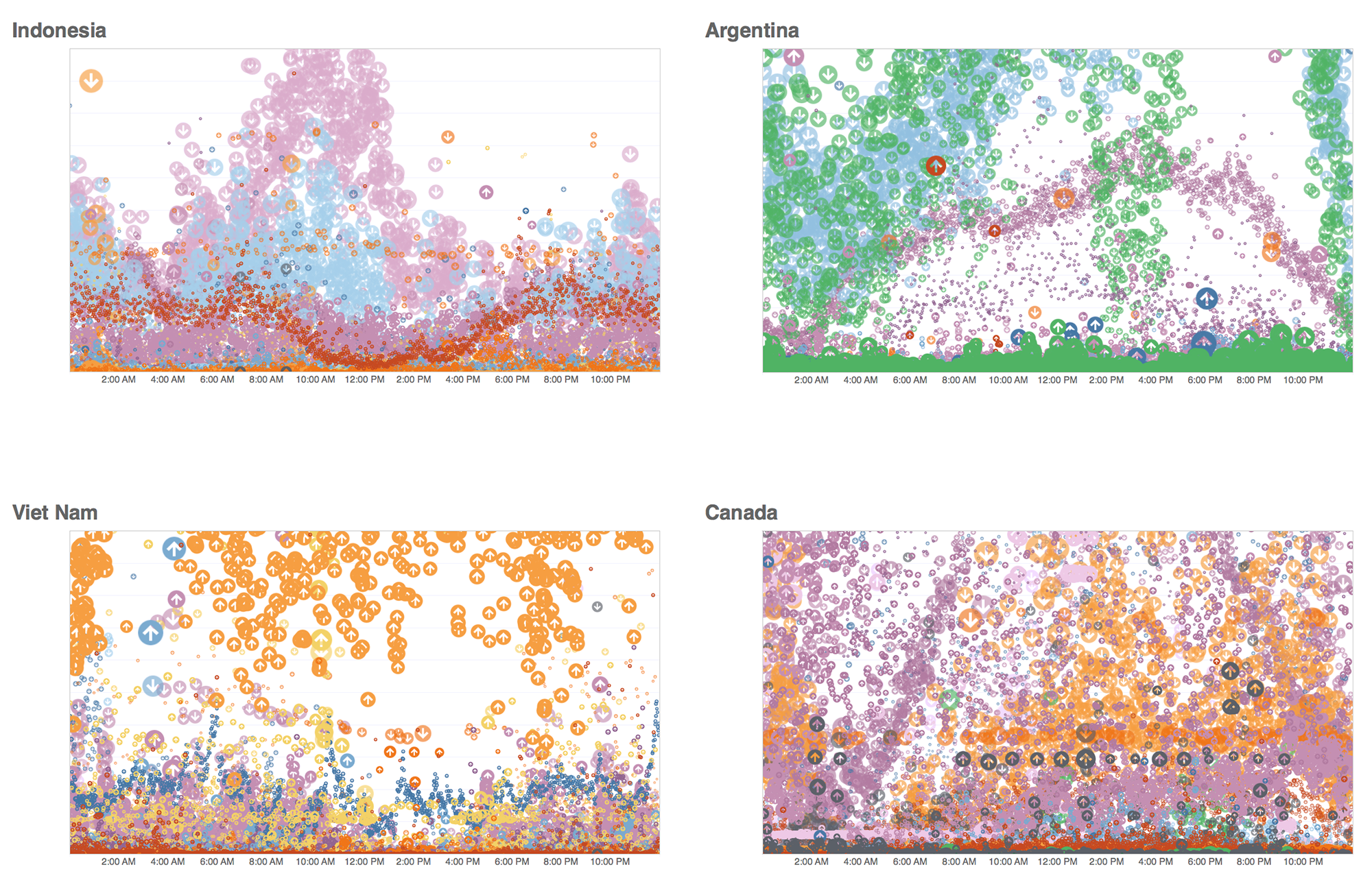Google Cloud creates works of art using big data
The work is designed to create a global picture of the data it services


Creative minds at Google Cloud have come up with a way to make data storage more interesting by visualising storage traffic data to create stunning works of art.
In collaboration with Staman Design, a data visualisation design studio, the two companies used the trajectory, velocity and density of data moving around the globe to create virtual maps.
"Looking at Cloud Storage requests over time showed us a distinct pattern, the pattern gave us a way to correlate countries, and each correlation gave us an insight into connections around the globe," said Chris Talbott, Google Cloud's head of cloud storage product marketing.
"So we put it all together in a video that gave every country a turn in the spotlight. It jumps from country to correlated country, showing unexpected connections and prompting conversation and discussion."
Most of the art created by the request data has been on display as Google Cloud's Next events in San Francisco, Tokyo or London. The idea was to create a global picture of its service that highlighted patterns that would help the company better serve its customers.
But, as Talbott put it "somewhat jokingly", Google wondered if it could make boring old storage beautiful. The answer was yes, as it's managed to paint wonderfully vivid pictures using the data.
The process began by looking at cloud storage data, requested by customers. This data charted a request from it's country of origin to the relevant cloud region, and vice versa. The team took one weeks' worth of storage data and searched for useful patterns for customers. The information detailed the direction of the data, but not who it belonged too.
Sign up today and you will receive a free copy of our Future Focus 2025 report - the leading guidance on AI, cybersecurity and other IT challenges as per 700+ senior executives

Visualised data migration from around the world - courtesy of Google Cloud
"The associated data also tells us the size of the request in GBs and a timestamp," explained Talbott. "Since the data is anonymized, we don't know which user is making the request, whose data is being requested or what the content is."
"You can make storage beautiful when you look at it in different ways," he said, "and in doing so you can really generate some thought-provoking insights for your customers."
Bobby Hellard is ITPro's Reviews Editor and has worked on CloudPro and ChannelPro since 2018. In his time at ITPro, Bobby has covered stories for all the major technology companies, such as Apple, Microsoft, Amazon and Facebook, and regularly attends industry-leading events such as AWS Re:Invent and Google Cloud Next.
Bobby mainly covers hardware reviews, but you will also recognize him as the face of many of our video reviews of laptops and smartphones.
-
 Trump's AI executive order could leave US in a 'regulatory vacuum'
Trump's AI executive order could leave US in a 'regulatory vacuum'News Citing a "patchwork of 50 different regulatory regimes" and "ideological bias", President Trump wants rules to be set at a federal level
-
 TPUs: Google's home advantage
TPUs: Google's home advantageITPro Podcast How does TPU v7 stack up against Nvidia's latest chips – and can Google scale AI using only its own supply?
